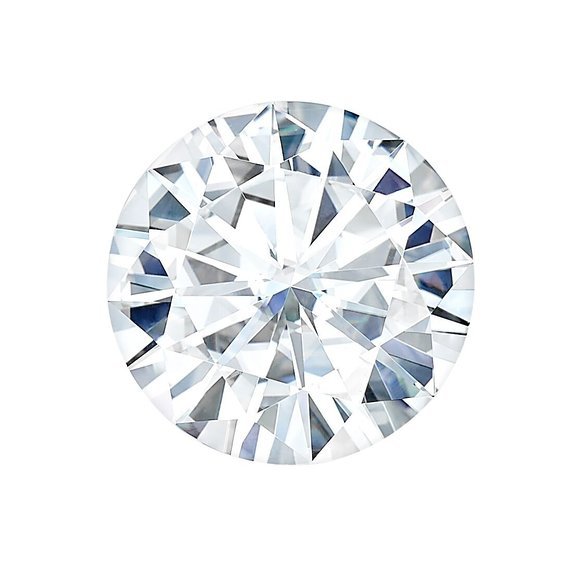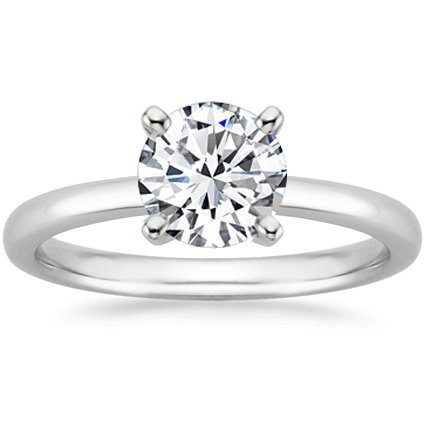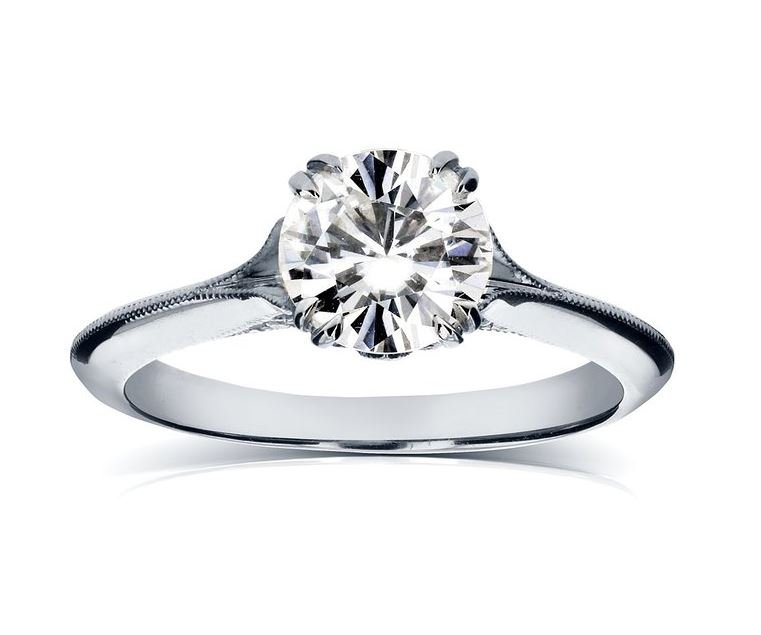Difference Between Moissanite Diamonds
What is a Moissanite Diamond?
Discovered in a crater made by a meteorite in Arizona in 1893 by Frenchman and later Nobel Peace Prize winner Henri Moissan, the gemstone “moissanite,” which bears his name, is an exquisite stone. Chemically composed of silicon carbide, natural moissanite is extremely rare but its laboratory-made counterparts are readily available and are even more competitively priced than diamonds. The laboratory version of the stone is engineered to resemble the qualities of diamonds but still maintains its identity as compositionally different from the diamond stone. Below, we discuss the difference between diamond and moissanite.
Moissanite Compared to Diamond
Brilliance
Depending on the quality of the moissanite, the stone is not completely colorless, giving off a slight yellowish green hue in certain lights and is considered more brilliant than a diamond. This means that it disperses light very well, giving the stone that desired “sparkle” effect that most people typically associate exclusively with diamonds. This is a key difference between moissanite and diamonds and perhaps is the easiest way to tell the two almost identical stones apart. Moissanite “sparkle” is usually much greater than that of a diamond.
There are several things to consider when comparing and contrasting moissanite and diamonds when choosing a stone for an engagement or wedding ring. Most people prefer a stone that is colorless and while there are laboratory made forms of moissanite that claim to be colorless, depending on the quality of moissanite stone, this may or may not be the case. Like diamonds, the smaller the diamond or moissanite stone, the more colorless it will appear so keeping that fact in mind while shopping around is key.
Charles & Colvard®, the main producers of moissanite, have trademarked three types of brilliance for moissanite based on its color. Forever ClassicTM is on the J-K rangeof the gem color scale and has faint undertones of green to yellow to gray. Forever Brilliant® is near-colorless in the range of G-H-I . Forever OneTM is colorless and would fit the D-E-F category for clarity and brilliance. More details about the gem color scale can be found here.
Hardness
Another key difference, although slight, between these two types of stone is their score on the hardness scale. When scoring gemstones for their hardness capabilities and the resistance to scratching and damage, the Mohs Scale of Hardness is used. This scale, which measures the qualitative properties of minerals runs from one to ten, with ten being the hardest mineral known. Diamonds score a ten on this scale which attributes to their popularity in the jewelry business. Not to be outdone however, moissanite scores a 9.25, a score higher than any other mineral except diamonds in the jewelry business. Another plus for moissanite comes from its natural ability to resist the attraction of grease and dirt, keeping the stone and jewelry itself cleaner and more beautiful in between cleanings.
Price
Perhaps the most favorable review of moissanite comes from its price standpoint. Where diamonds are highly priced and cost is contingent upon qualities like cut, color and clarity, moissanite is reasonably priced and their cost hinges only upon two factors–size and type. Therefore, the size of the moissanite stone and whether or not it has been enhanced are truly the only real costs a buyer has to consider before purchasing.
Whether or not the purchase of a moissanite stone is because of budget reasons or for a desire of a stone other than a diamond, moissanite is a beautiful and cost-friendly option that is surely elegant and will dazzle in any jewelry setting.
For more examples of moissanite rings, be sure to read our articles Moissanite Engagement Rings Review, and Cheap Moissanite Engagement Rings. For a great selection of moissanite rings and jewelry, be sure to visit this page.



